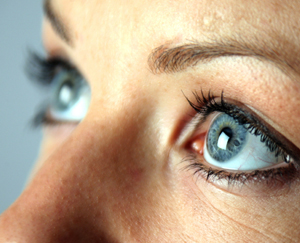Eat Right to Beat Eye Disease

As the Western world’s population continues to live longer, age-related problems like macular degeneration are becoming more common. Fortunately, diet may play an important role in prevention: one study shows that macular degeneration—the most common cause of blindness in people over age 65—might be avoided by replacing refined carbohydrates with whole grains.
The glycaemic index connection
Macular degeneration attacks the part of the eye responsible for central vision. In its early stages, the disease may make straight lines appear wavy or make objects look fuzzy. As it progresses, reading, driving, and other activities that require sharp vision become more difficult.In the study, over 4,000 people between ages 55 and 80 had their diets categorized by glycaemic index—a measure of food’s blood sugar—raising effects. A high-glycaemic-index diet raises blood sugar levels after a meal more than a low-glycaemic-index diet does.
Compared with people with diets that measured lowest on the glycaemic index, people eating the highest glycaemic index foods were almost 1 1/2 times as likely to have features of macular degeneration. The higher the dietary glycaemic index, the more severe the disease. Further, people with a higher than average glycaemic index diet had a 49% increased risk of advanced macular degeneration.
“We estimate that 20% of cases of advanced macular degeneration would be eliminated if people consumed diets that have dietary glycaemic index values below the median,” the study’s authors concluded.
Tips to reduce your risk
- Choose foods with lower glycaemic indexes—These are foods that have not undergone processing to remove the fibre-rich portions of the plant. Good options are whole wheat flour, brown rice, and pulses (beans, lentils, and peas).
- Limit foods with higher glycaemic indexes—Examples of these foods include white bread, sugar, white rice, and potatoes. High-glycaemic-index diets are implicated in many chronic diseases such as diabetes, heart disease, and cancer.
- Try whole grain versions of your favourite carbs—Look for whole wheat pasta, brown rice, and multigrain breads.
- Switch your sweetener— If you’re looking for a healthier way to sweeten your coffee or tea, stevia is a natural sweetener that has a value of zero on the glycaemic index.
Choosing unprocessed, whole foods appears to be a wise choice for eye health. The researchers noted, “Our results also suggest that the quality, not the quantity, of dietary carbohydrates influences the risk of macular degeneration.”
(Am J Clin Nutr 2007;86:180–8)
Copyright © 2024 TraceGains, Inc. All rights reserved.



 We are proud to announce that
We are proud to announce that  As the market evolves, customers increasingly request a wider variety of omega-3 options for their lipid...
As the market evolves, customers increasingly request a wider variety of omega-3 options for their lipid...  Maintaining healthy glucose levels is crucial for preventing metabolic conditions like diabetes,...
Maintaining healthy glucose levels is crucial for preventing metabolic conditions like diabetes,...  Looking at formulating a new vitamin blend? Discover
Looking at formulating a new vitamin blend? Discover 







































